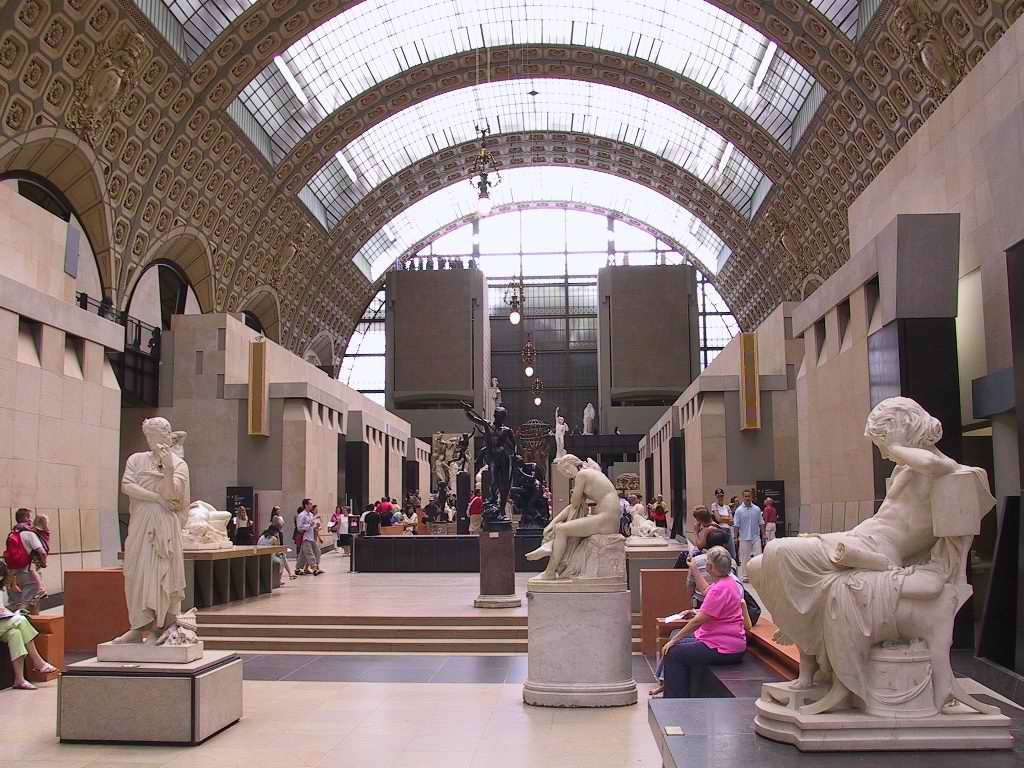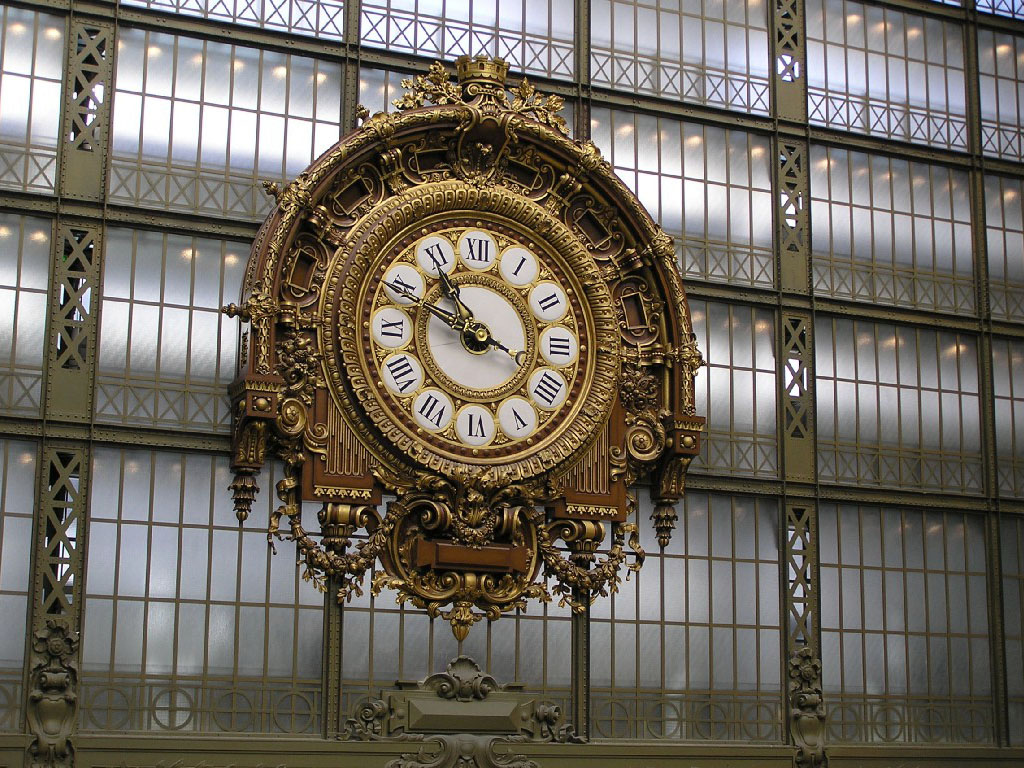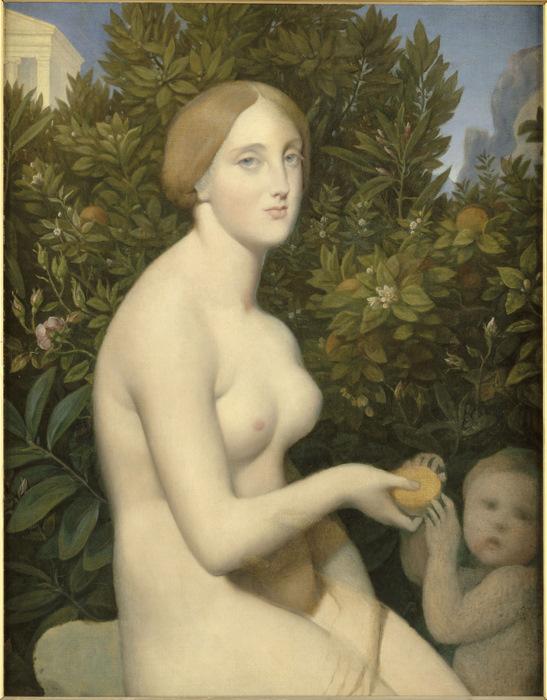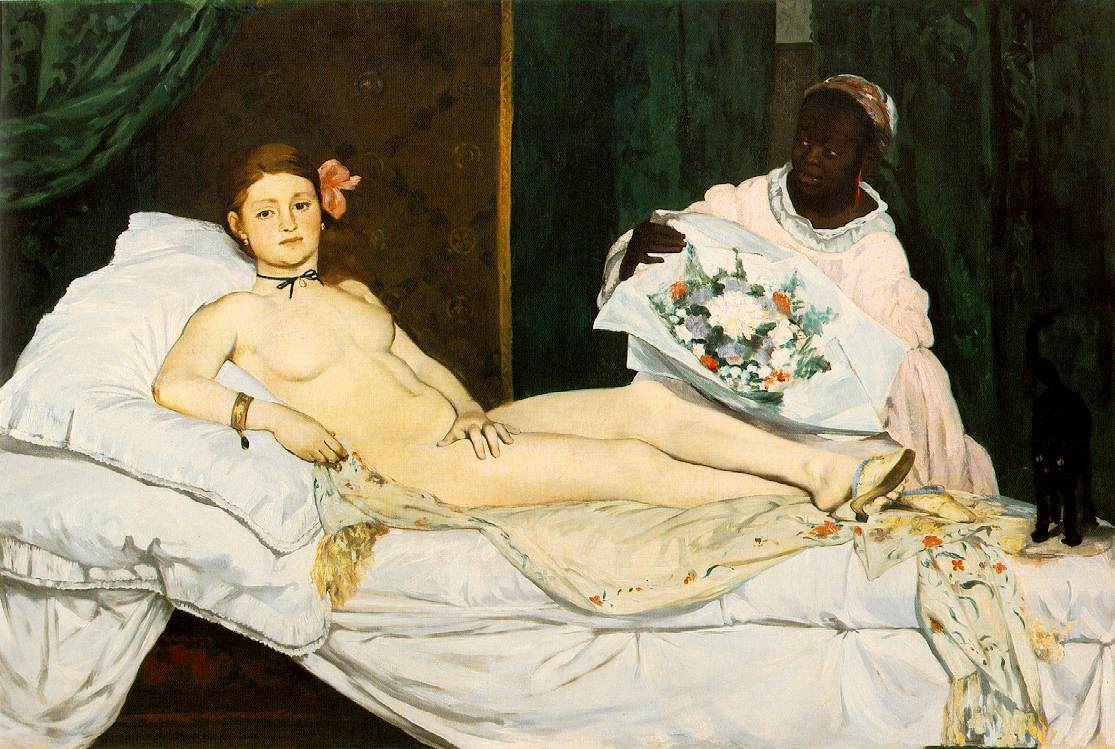
Marianne Stokes: 圣母子
奥赛博物馆(法文:Musée d'Orsay)是法國巴黎的近代艺术博物馆,主要收藏从1848年到1914年间的绘画、雕塑、家具和摄影作品。博物馆位于塞纳河左岸,和卢浮宫斜对,隔河和杜伊勒里公园相对。原来是建于1900年的火车站,是从巴黎到奥尔良铁路的终点——奥赛车站。1939年进入巴黎的铁路取消,车站关闭。1978年被列为受保护的历史建筑,1986年改建成为博物馆,将原来存放在卢浮宫的,在茹德葆博物馆的,以及在蓬皮杜艺术中心国家现代艺术博物馆内的有关藏品全部集中到这里展出。大厅中还保留着原来的车站大钟。




La dame au gant by Carolus Duran

The Young Girl and Death by Marianne Stokes玛丽安·斯托克斯。 这幅画给我的印象最深。它描绘一位少女面对死亡天使时的恐惧。为什么少女用手拉扯床单? 应该是死神带来的毛骨耸然的冷酷感。死亡天使来自黑暗之处,故行走需要借助灯光的照明。那黑色的长袍和又黑又大的翅膀,给人阴森鬼怪的感觉。




Portrait de Madame Gaudibert by Claude Monet (1868)
Constantin Emile Meunier (1831-1905), Dark Landscape – In the Black Country, Museu D'Orsay
Peasant Girl Lighting a Fire. Frost by Camille Pissarro (1888)

War or The Cavalcade of Discord by Henri Rousseau


Sir Edward Burne-Jones.
Princess Sabra (The King's Daughter).
1865-1866

The Birth of Venus by Alexandre Cabanel

Venus in Paphos by Jean Auguste Dominique Ingres
Hans
Thoma was one of Germany's outstanding painters in the late 19th
century. Trained in Karlsruhe and Düsseldorf in the 1860s, he met
Gustave Courbet during a long stay in Paris and was deeply influenced by
him. Dividing his career between Munich, Frankfurt and Florence, he was
one of the "German Romans" who found in the observation of Renaissance
art a means of contemporary expression which played a major role in the
genesis of European symbolism at the end of the century.
Reminiscences
of Italy, as found in the tradition of classical landscapes initiated
by Poussin, are particularly obvious in this painting. Close to Arnold
Böcklin's dreamy pantheism, Thoma is nonetheless conspicuously different
from the Swiss artist in his preference for prosaic country scenes over
mythology. In its lyricism, Rest forges a link with the many peasant scenes that Thoma had already painted.

Pierre-Auguste RENOIR, Pont du chemin de fer à Chatou, en 1881.



“Starry Night, Arles“ by Vincent van Gogh
Olympia is an oil on canvas painting by Édouard Manet that caused shock and astonishment when it was first exhibited at the 1865 Paris Salon. Painted in 1863, it measures 130.5 by 190 centimetres (51 x 74.8 in). The nation of France acquired the painting in 1890 with a public subscription organized by Claude Monet. It is now in the Musée d'Orsay, Paris.
What shocked contemporary audiences was not Olympia's nudity, nor even the presence of her fully clothed maid, but her confrontational gaze and a number of details identifying her as a demi-mondaine or prostitute. These include the orchid in her hair, her bracelet, pearl earrings and the oriental shawl on which she lies, symbols of wealth and sensuality. The black ribbon around her neck, in stark contrast with her pale flesh, and her cast-off slipper underline the voluptuous atmosphere. "Olympia" was a name associated with prostitutes in 1860s Paris.

A Box at the Theatre des Italiens by Eva GONZALES (1875-1878)


The Beach at Cabourg at High Tide, Rene'-Xavier PRINET (1910)
The Bedroom at ArIes by Vincent van Gogh (1889). Oil on canvas,
57.5 x 74.0 cm.
Paul Cézanne:The Card Players 1894-1895

Woman with a Parasol turned to the right by Claude Monet

La robe rose ou Vue de Castlenau by Frederic Bazille (1864)
"Spring" by Jean François Millet

The Hunted Roe Deer on the Alert Spring by Gustave Courbet
“Dancers Climbing the Stairs” by Edgar Degas
The Enigma (1871) by Gustave Dore weaving together scenes from the Franco Prussian War (1870-1871) in Paris and mythology.
Prima Ballerina, pastel by Edgar Degas, c. 1876